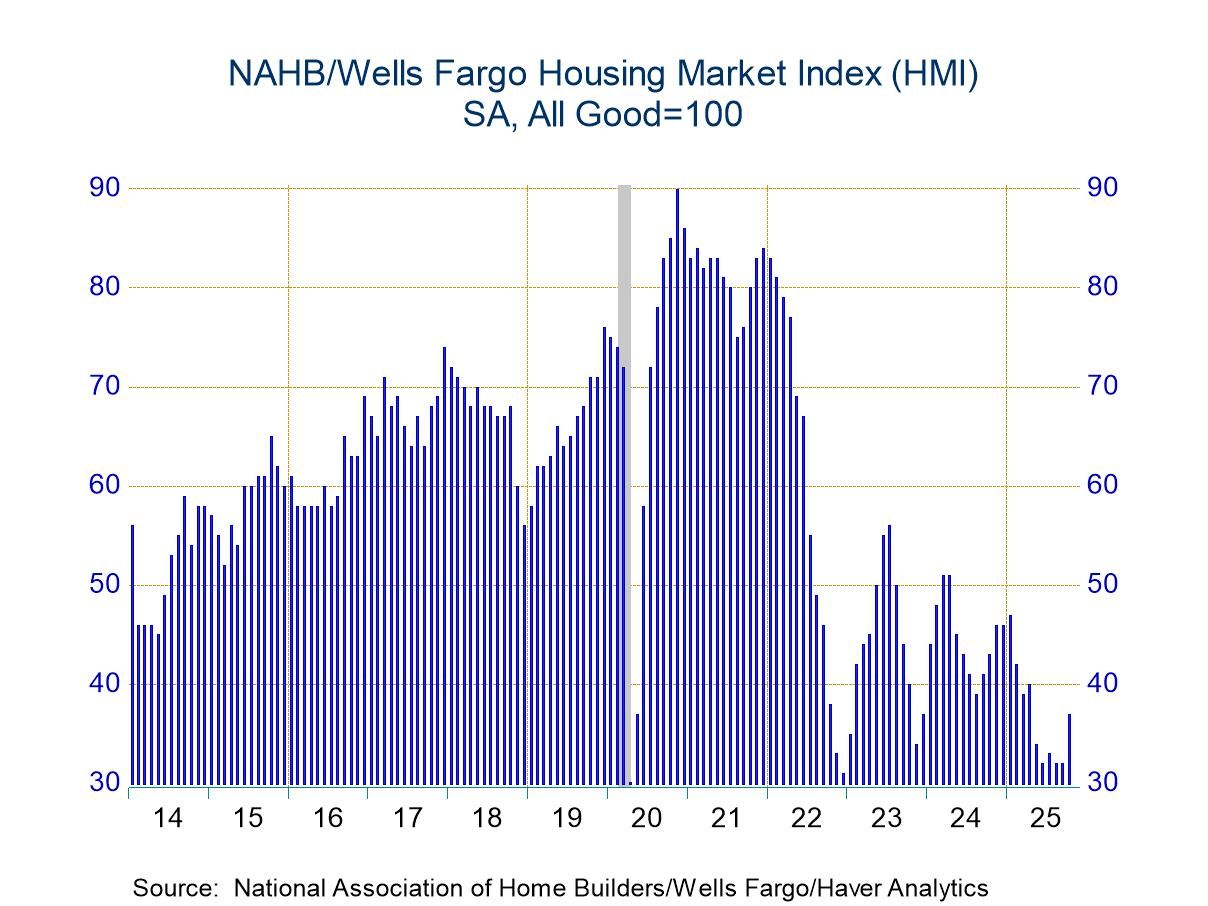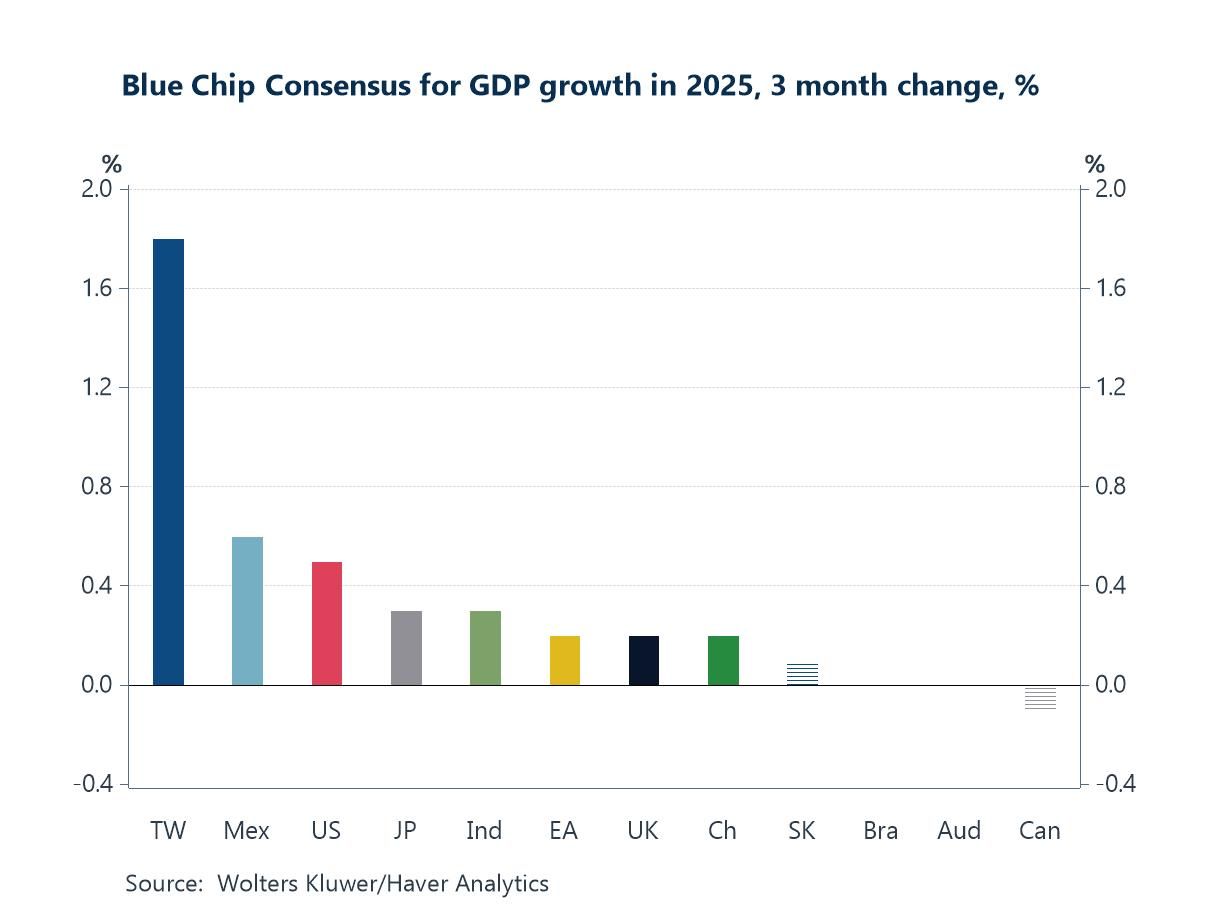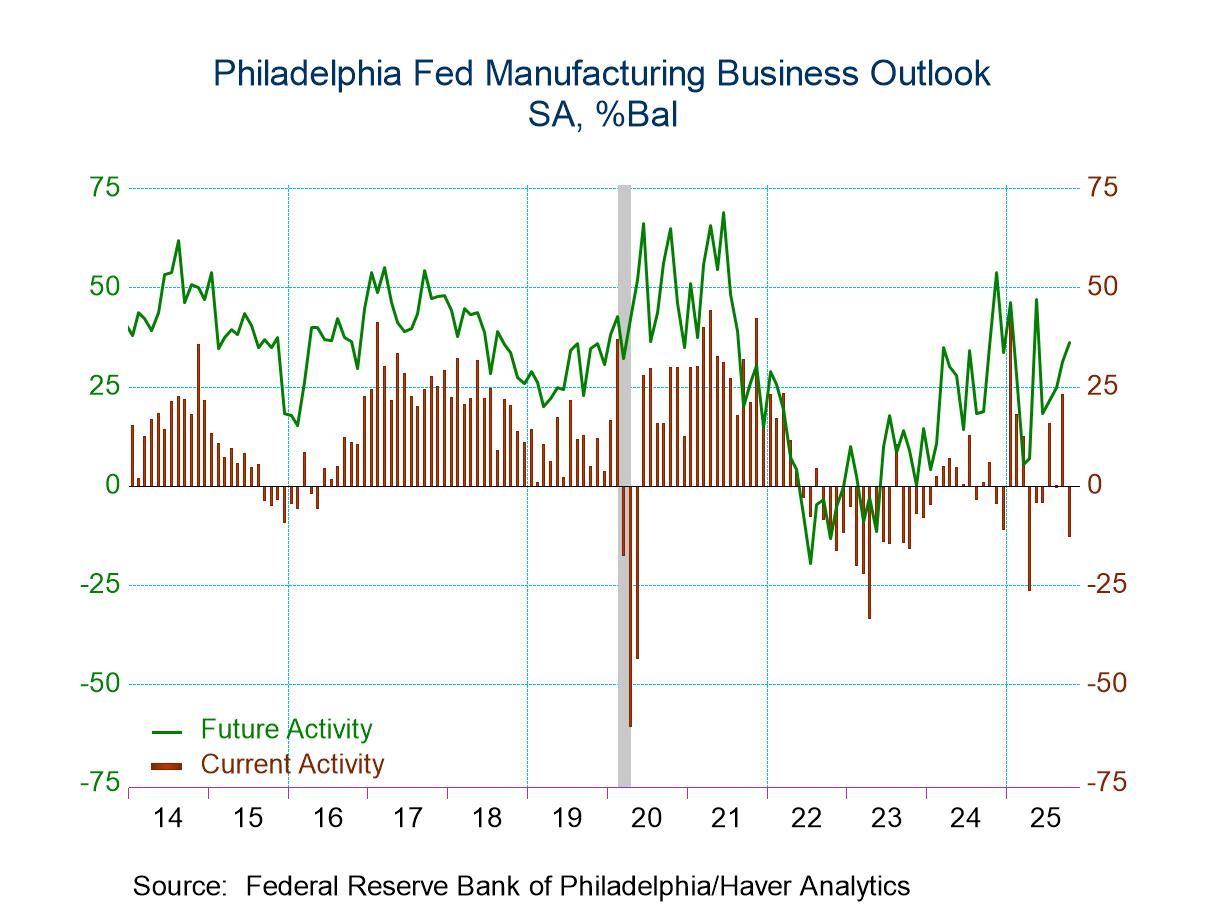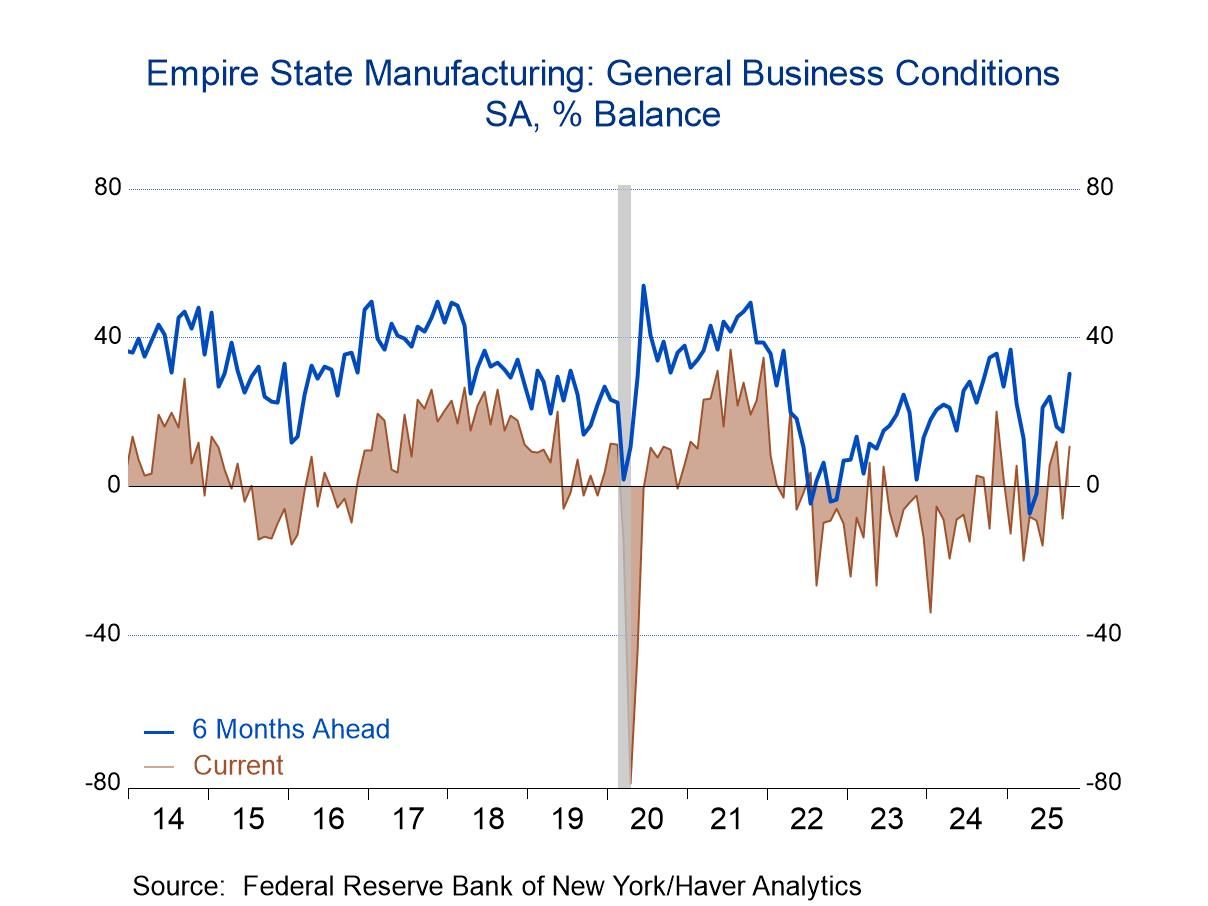 Global| Nov 03 2003
Global| Nov 03 2003ISM Factory Index Higher, Orders Strong
by:Tom Moeller
|in:Economy in Brief
Summary
The Purchasing Managers Composite Index (PMI) released by the Institute of Supply Management rose more than expected to 57.0 in October from 53.7 in September. Consensus expectations were for a reading of 55.5. During the last twenty [...]
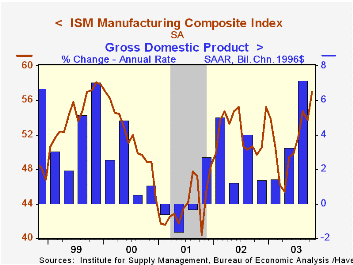
The Purchasing Managers’ Composite Index (PMI) released by the Institute of Supply Management rose more than expected to 57.0 in October from 53.7 in September. Consensus expectations were for a reading of 55.5.
During the last twenty years there has been a 63% correlation between the level of the PMI Composite Index and quarterly growth in real GDP.
The index for new orders (64.3) surged nearly four points to the highest level since 1994. The production index (62.6) jumped more than five points to the highest level since 1997.
The employment index (47.7) rose moderately to the highest level this year. This index has not been above 50, the dividing line between rising and falling payrolls, since September 2000. There has been a 71% correlation during the last ten years between the ISM employment index and the one-month change in factory sector payrolls.
The prices paid index rose last month to 58.5. There has been a 28% correlation between the prices paid index and the y/y change in the finished goods PPI over the last ten years. The correlation with the intermediate materials PPI has been a higher 62%.
A report from the Federal Reserve Bank of San Francisco asking "Is Our IT Manufacturing Edge Drifting Overseas?" can be found here.
| ISM Manufacturing Survey | Oct '03 | Sep '03 | Oct '02 | 2002 | 2001 | 2000 |
|---|---|---|---|---|---|---|
| Composite Index | 57.0 | 53.7 | 49.7 | 52.4 | 44.0 | 51.7 |
| New Orders Index | 64.3 | 60.4 | 52.2 | 56.7 | 46.2 | 52.0 |
| Prices Paid Index (NSA) | 58.5 | 56.0 | 59.5 | 57.6 | 42.9 | 64.8 |
by Tom Moeller November 3, 2003
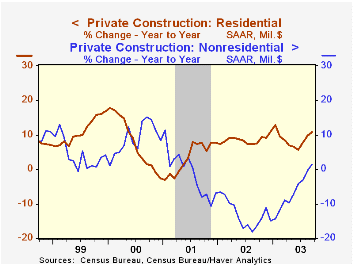
The value of total construction put in place jumped 1.3% in September and prior months' figures were revised up sharply due to raised figures for private sector building. A 0.3% gain had been expected by the Consensus.
Private residential building activity surged 1.4% following strong gains in the prior two months. The gain was led by a 2.0% (15.9% y/y) jump in single family home building.
Nonresidential building activity recovered 2.5% following a 1.5% August drop that was revised shallower from the initial report. Office building activity rose 1.7% (-13.7% y/y) but it has moved in a tight, depressed range for all of this year. Commercial construction slumped 1.5% (+0.1% y/y) and gave back all of the strong gains in the prior two months.
These more detailed categories represent the Census Bureau’s reclassification of construction activity into end-use groups. Finer detail is available for many of the categories; for instance, commercial construction is shown for Automotive sales and parking facilities, drugstores, building supply stores, and both commercial warehouses and mini-storage facilities. Note that start dates vary for some seasonally adjusted line items in 2000 and 2002 and that constant-dollar data are no longer computed.
| Construction Put-in-place | Sept | Aug | Y/Y | 2002 | 2001 | 2000 |
|---|---|---|---|---|---|---|
| Total | 1.3% | 0.7% | 6.5% | 1.1% | 2.7% | 8.3% |
| Private | 1.7% | 0.7% | 7.6% | -0.2% | 1.4% | 8.0% |
| Residential | 1.4% | 1.7% | 10.7% | 8.6% | 3.3% | 7.4% |
| Nonresidential | 2.5% | -1.5% | 1.5% | -13.0% | -1.3% | 8.9% |
| Public | 0.0% | 0.8% | 3.1% | 5.3% | 7.4% | 9.5% |
Tom Moeller
AuthorMore in Author Profile »Prior to joining Haver Analytics in 2000, Mr. Moeller worked as the Economist at Chancellor Capital Management from 1985 to 1999. There, he developed comprehensive economic forecasts and interpreted economic data for equity and fixed income portfolio managers. Also at Chancellor, Mr. Moeller worked as an equity analyst and was responsible for researching and rating companies in the economically sensitive automobile and housing industries for investment in Chancellor’s equity portfolio. Prior to joining Chancellor, Mr. Moeller was an Economist at Citibank from 1979 to 1984. He also analyzed pricing behavior in the metals industry for the Council on Wage and Price Stability in Washington, D.C. In 1999, Mr. Moeller received the award for most accurate forecast from the Forecasters' Club of New York. From 1990 to 1992 he was President of the New York Association for Business Economists. Mr. Moeller earned an M.B.A. in Finance from Fordham University, where he graduated in 1987. He holds a Bachelor of Arts in Economics from George Washington University.



